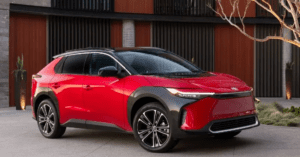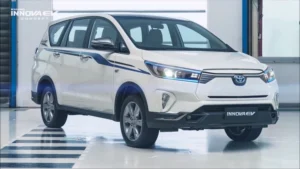Toyota’s recent announcement to transition fully to electric vehicles (EVs) has been met with mixed reactions. While some see this as a step in the right direction towards a greener future, others argue that it could have negative consequences, both for the company and the environment. In this article, we will explore why Toyota’s shift to EVs may not be as straightforward as it seems, and why it could have unintended consequences.

The Hidden Costs of Electric Vehicles
While EVs are often touted as a more environmentally friendly option, they come with their own set of challenges. For example, the production of batteries and electric motors is a highly energy-intensive process, which requires the use of rare and finite resources such as lithium and cobalt. Additionally, the manufacturing process for these components generates significant greenhouse gas emissions, which can have a negative impact on the environment.
Another issue is that the electrical grid that powers EVs is often powered by fossil fuels, which means that EVs are only as clean as the electricity that powers them. This means that in regions where the electrical grid is heavily reliant on coal and natural gas, EVs will not have a significant impact on reducing greenhouse gas emissions.
The Business Case for Electric Vehicles
From a business perspective, Toyota’s shift to EVs may not be as wise as it seems. The production and sale of EVs is a highly competitive market, and the margins are much lower than those for traditional gasoline-powered vehicles. Additionally, the cost of batteries and electric motors is significantly higher than that of traditional internal combustion engines, which means that the price of EVs is also much higher. This could make them less attractive to consumers, who are often more price-sensitive.
Furthermore, the development and production of EVs require significant investments in research and development, manufacturing facilities, and distribution networks. This means that Toyota will have to divert resources away from other areas of its business to make this transition, which could have a negative impact on its bottom line.

The Environmental Case for Electric Vehicles
While EVs are often seen as a way to reduce greenhouse gas emissions and address climate change, there is evidence to suggest that this may not always be the case. For example, the production of batteries and electric motors requires significant amounts of energy, which can have a negative impact on the environment. Additionally, the disposal of batteries and other components of EVs can also have a negative impact on the environment, particularly if they are not recycled properly.
Conclusion
While the shift to EVs may seem like a step in the right direction, it is important to consider the hidden costs and potential consequences. While EVs may be a more environmentally friendly option in theory, they come with their own set of challenges, both from a business and environmental perspective. Toyota will need to carefully consider these factors as it moves forward with its plans to transition fully to EVs, and ensure that it is doing so in a way that is sustainable and responsible.




